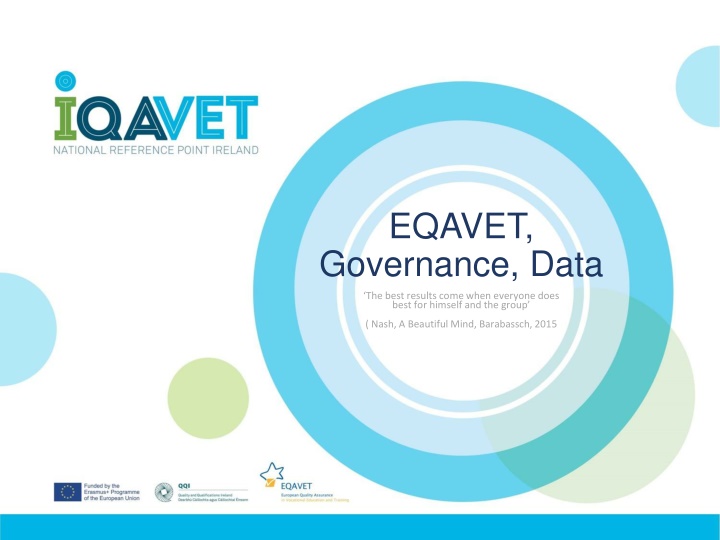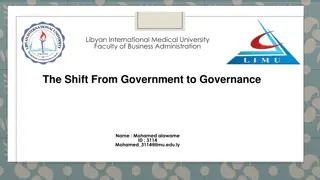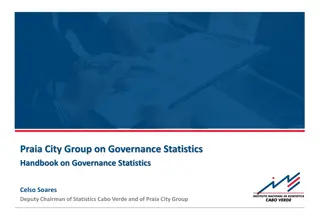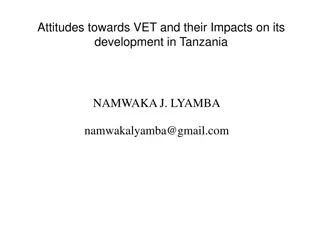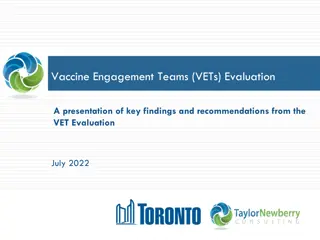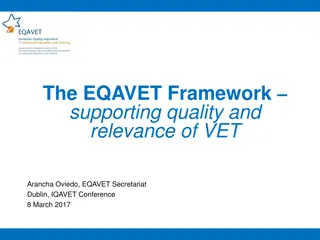Enhancing VET Governance for Effective Policy and Data Utilization
The article delves into the integration of EQAVET principles with governance in vocational education and training (VET) systems, emphasizing the importance of stakeholder engagement, data-driven decision-making, and effective policy transfer mechanisms. It highlights the role of governance in promoting quality assurance, continuous improvement, and consensus-building within the VET sector, ultimately enhancing the employability and skills development outcomes. Through a multi-level governance approach, the article advocates for leveraging data insights and fostering collaborative relationships for impactful VET governance.
Download Presentation

Please find below an Image/Link to download the presentation.
The content on the website is provided AS IS for your information and personal use only. It may not be sold, licensed, or shared on other websites without obtaining consent from the author.If you encounter any issues during the download, it is possible that the publisher has removed the file from their server.
You are allowed to download the files provided on this website for personal or commercial use, subject to the condition that they are used lawfully. All files are the property of their respective owners.
The content on the website is provided AS IS for your information and personal use only. It may not be sold, licensed, or shared on other websites without obtaining consent from the author.
E N D
Presentation Transcript
EQAVET, Governance, Data The best results come when everyone does best for himself and the group ( Nash, A Beautiful Mind, Barabassch, 2015
EQAVET Recommendation Common framework- 4 stages- cycle Promote and monitor continuous improvement Indicative descriptors- consider the effectiveness of arrangements Indicators- measure performance On-line tools for NRP, and for providers; Includes case studies Building blocks
EQAVET and governance EQAVET operates Politically, systemically- EU Cooperation in VET, act on what we have now- more than QA- employability! WBL in VET Recommendation- fit for purpose? Annexes? Riga Conclusions EU 2020, Upskilling Pathways Wider VET proposal for 2018- common VET policy Governance as an instrument for policy transfer (Barabasch) Nationally NRP VET reform, horizontal co-operation, stakeholders Regionally, locally, sectorially Providers, practitioners, VET students, mobility, transparency, trust
EQAVET and governance Not overtly discussed and named as Governance. So- how? Mediates country level systems- surveys, empirical data Open method of Co-ordination- soft co-operation, learning, sharing, growing trust- cultural contexts System level: PLSS data: longitudinally useful, feedback loops, supporting reporting to EU Provider level: Building blocks 01: Management Culture Ensure there is a management culture which is committed to quality assurance 05: use data and feedback to improve VET 06: Ensure VET is based on the involvement of internal and external stakeholders
VET Governance- knife edges? Torino Process- Subsidiarity decisions taken at appropriate level, as much effective engagement of stakeholders, productive partnerships, co-ordination mechanisms- management for accountability and for effectiveness. Pay attention to the category of human or social factor in policy transfer- what, how, which instruments, contextual features etc.- result of human interaction- etiquette, ethics and role Governance- a constellation of actors and factors, systems, cultures, instruments Role clarity, leadership training; multilevel governance- networking, vertical and horizontal, interaction and closing loops with range of players- effective leadership Where governance is acknowledged as strong and effective, policy is built through a process of consultation and consensus building with a wide range of stakeholders, and is subject itself to such governance Where governance is acknowledged as strong and effective, data is skilfully used: problems are well defined, data informs, is not just published, but clustered etc
